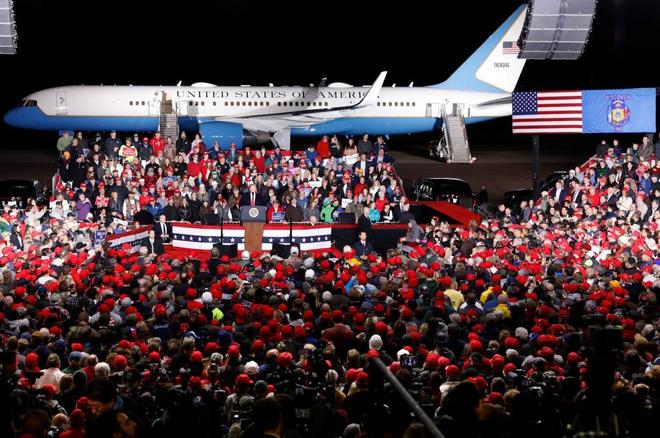
Since the 2016 presidential campaign, Donald Trump’s rhetoric has centered around spreading hate and conspiracy theories. The country that’s lost splendor he was supposedly going to bring back was, according to him, a wasteland plagued with crime, misery and immigrants stealing the bread of native-born citizens. His opponent, Hillary Clinton, was at the center of most of the conspiratorial plots Trump propagated from his podium.
From that populist message came aberrations such as Pizzagate, that crazy episode in which an ultra-nationalist appeared armed with a rifle in a popular Washington, DC pizzeria to rescue children that Clinton and her campaign chief were supposedly sexually abusing in the basement. The alt-right movements had spread a perverse lie on social media: the former secretary of state was presiding over a pedophile network in which her fellow party members participated. All this was taking place as the current president was openly asking the Kremlin to hack his rival’s campaign emails. The spiral of Russian interference and “fake news” had been unleashed.
Almost two years later, the environment is one of a dystopia, a contemporary rather than futuristic one. The presidential tweets are the Big Brother that never rests. Every day begins with a new shocking episode. And as it happens, this week the scares weren’t figurative but rather came in the form of explosives wrapped in manila envelopes addressed to prominent Democratic or Democrat-linked figures that have been the target of defamatory comments from the president.
The first attempted terrorist attack was against philanthropic liberal millionaire George Soros, enemy of populists on both sides of the Atlantic: in the United States, he’s been accused of “financing” those that protested Judge Brett Kavanaugh, as well as the caravan of Central American immigrants. This is an accusation that has also been spread throughout Europe, where Soros is blamed for “paying” immigrants, though no proof has been provided to back up this claim.
The same day that Hillary Clinton, former President Barack Obama and other members of the Democratic party were victims of these attempted homemade bomb attacks, Alexander Soros, the son of George Soros, who is president of the Open Society Foundation, wrote a New York Times opinion piece that held Trump responsible for the prevailing polarization. In his piece he emphasized that his father (a Holocaust survivor) has been the target of anti-Semitic attacks, and ever since the triumph of the New York real estate tycoon, this sentiment against Jews has been stoked among supremacist groups.
Hours after the shock caused by the explosives, which were even found in CNN’s New York office, Trump publicly condemned these terrorist acts and called for unity, but at this point his words are empty. In fact, that same night, during a political rally, he attacked the media again, blaming them for creating a “hostile” environment, in front of an audience that sees journalists as the “enemy.”
Conspiracy theories from the most reactionary populism are now the “opium” of the people, and the White House has become the platform from which the hate games spread. In a 2017 interview, the well-known novelist Philip Roth said of the current president, “What is most terrifying is that he makes any and everything possible.” The author of “The Plot Against America” predicted the turn the country would take.

Leave a Reply
You must be logged in to post a comment.